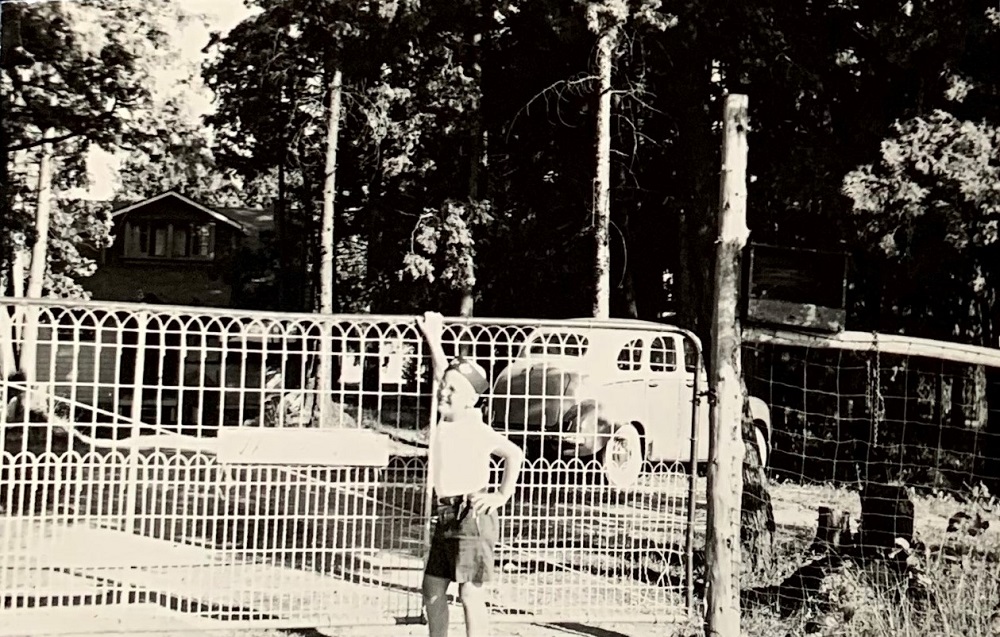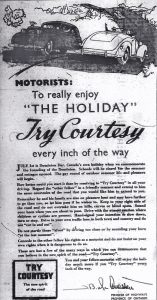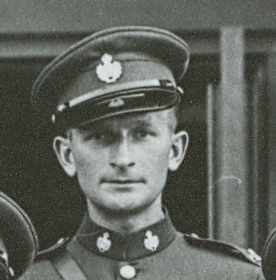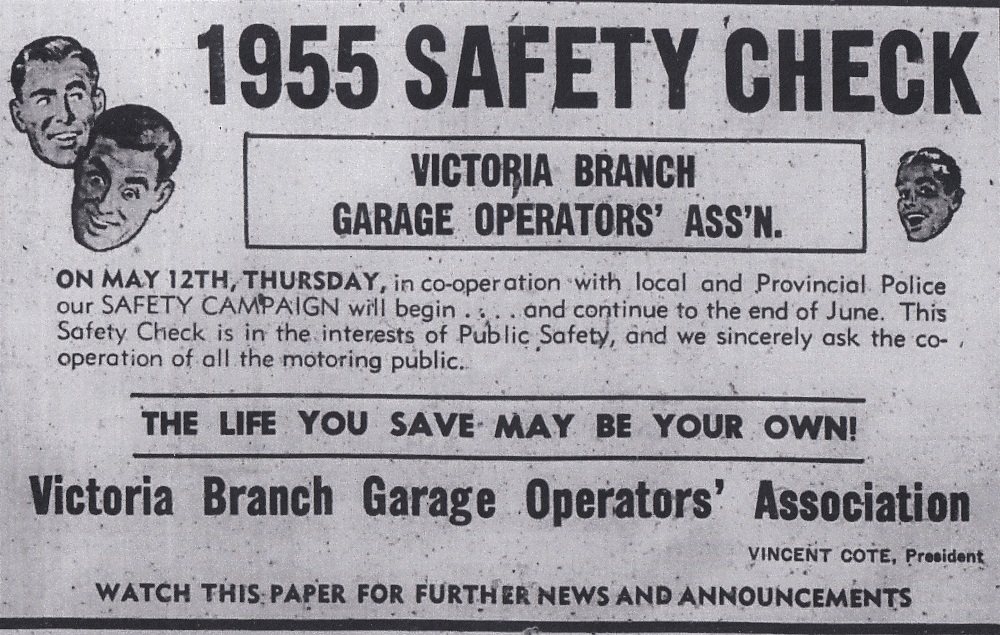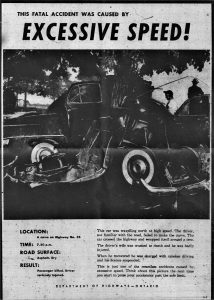Risks of the Road
Despite the heartwarming stories about memorable road trips, highway-based tourism had a darker side. Throughout the twentieth century, careless driving habits and enormous numbers of motorists travelling into northwestern Kawartha Lakes too often led to tragedy.
Some risks of the road predated the arrival of the automobile. “There are now over 20 bicycles in our village and a pedestrian endangers his life by endeavouring to cross the street,” Kirkfield residents were warned in the May 19, 1899 edition of the Canadian Post. Those travelling by horse-and-wagon were especially vulnerable to serious injury and even death by falling from their vehicles or being trampled by horses.
Early motorists who had trouble with their automobiles had to either wait for help or go in search of a telephone – a journey that, in isolated communities, could take several hours on foot. The cars themselves posed several safety risks. In 1913, a party of motorists, travelling in an open car with the gas tank in close proximity to the driver, narrowly escaped serious injury while trying to avoid a roadside brush fire near Moore’s Lake, north of Norland. Said the Lindsay Post:
The road twisted so much among the rocks that going ahead on faith was certain to end either in a smash up in the boulders or a warm reception in the flames, which was not particularly inviting, when the gasoline tank was thought of.
Although automotive design improved over the ensuing decades, too many motorists continued to break speed laws. “Many of our automobile friends seem to lose prudence, feeling and all human kindness once they come to possess a car,” exclaimed a September 24, 1914 editorial in Lindsay’s Watchman-Warder newspaper.
Things would only get worse. In 1950, the Accident and Statistical Division of the Motor Vehicles Branch reported that motor accidents in the region now known as Kawartha Lakes had increased by almost 40% over the figure reported in 1949. “Holiday driving would be less dangerous,” stated provincial Highways Minister George H. Doucett (1897-1974), “if drivers realized the dangers and gave more thought to preventing more accidents than they do to getting somewhere in a hurry.”
In trying to pacify young passengers asking “are we there yet?” some motorists quite simply put themselves and others at risk. Province-wide advertising campaigns sought to deter dangerous driving, particularly as cars grew bigger and faster.
Tourists travelling by car were not merely the beneficiaries of an improved highway system – they were sometimes, sadly, its victims.


